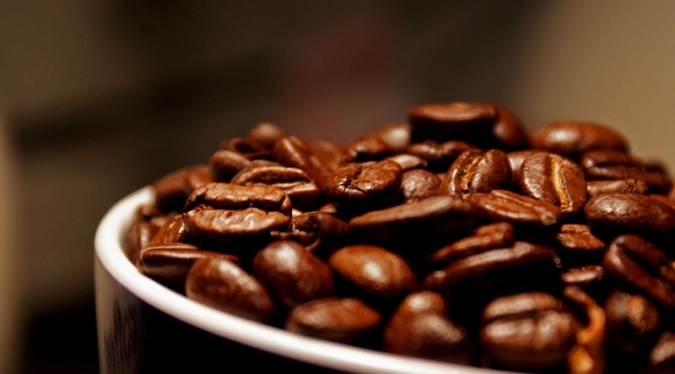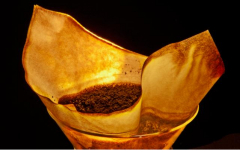[literacy] have you made a clear distinction between the coffee bean grading criteria? (above)
There are different ways to manage the origin of coffee beans, some are composed of large and small farmers, some are dominated by professional business owners, even if the coffee in the same place, its quality and flavor are also different, in order to mark the quality of coffee, but also in order to make the transaction more convenient, so there is a "coffee classification."

Coffee beans are handled differently in different countries, so there are a variety of grading methods. At present, there is no unified grading standard in the world. Generally speaking, only one method is used in a producing country, but it should be noted that individual farms may use other grading methods on their own. For example, Ethiopian coffee has Gr1-Gr5 and SHB. The most common ones we see are as follows:
To grade (Bean,Size) according to the size of coffee beans:
When buying fruit, everyone will have this experience. Generally, the shape is round and good-looking, and the larger fruits are more moist and delicious. Fruit merchants often use the size of apples as a reference to set prices. In fact, coffee beans are the same. Although the size of beans is not the only criterion for determining its quality and flavor, in many production areas, the size of coffee beans is indeed an important indicator of great reference; in which areas, beans grow big and have a beautiful curve, that is, coffee grows healthily, reaches a state of full maturity, and can best show a beautiful flavor.
In addition, coffee beans with the same maturity, that is, they have the same hardness and moisture content, easy to achieve uniform baking, and produce a consistent flavor, forming high-quality coffee. As a result, most emerging farms use this classification method.
This classification method is based on a variety of available screen classification, the screen has a variety of specifications, with a number to identify, the number is associated with the mesh. The size of the mesh is calculated in 1 stroke 64 inches. If the diameter of the mesh is 18 stroke 64 inches, the number of the mesh is 18; if the diameter of the mesh is 17 stroke 64 inches, the number of the mesh is 17; and so on, there are various numbered screens, such as 14, 15, 16, 19 and so on.
The process of screening is to put the coffee beans on the sieve, and after shaking them back and forth by hand or machine, the beans smaller than the sieve will fall and be removed; the beans that have been removed will be screened again through a smaller sieve and screened layer by layer, and the coffee beans will be sorted out.
After grading, the production area is divided into AA,A,B,C and PB series. AA is the highest level, while A-grade B-score C decreases successively, and those below C level are usually used as feed chat or fertilizer. In addition, round beans (Pea-Berry) have a special flavor, and the beans themselves are relatively small, so they have their own grade, that is, [PB], which is usually more expensive. In addition, we can also see the grades Y2 and T of XMagol Y1Magol. These coffee beans are of different sizes and have a lot of defective beans, so they are quite bad products and are not worth a try.
This classification is generally used in Kenya, New Guinea, Puerto Rico, Zimbabwe, Tanzania and Uganda. In addition, many Brazilian coffees are graded in this way, but they directly use 191,18,17,18,18,17. Instead of using AA,A,B,C and so on.
Graded by the number of points of defective beans (Imperfection):
This is the earliest method of grading and is still in use in many parts of Brazil. The method of identification is to randomly take 300 grams of samples and put them on black paper, because black paper can best avoid reflection. Then the professional appraiser carefully inspects the defective beans in the sample and accumulates different scores according to the types of defects. for example, black beans are counted as 1 point, pebbles as 1 point, big pebbles as 5 points, broken beans as 1 point, pest beans as 5 grains, sour beans as 1 point, large dried peels as 1 point, medium dried peels as 1 point, and 3 peels as 1 point. 5 unshelled beans count as 1 point, and 3 shell beans count as 1 point. After the identification is completed, the grade is NY2~NY8 according to the accumulated defect score, and there is no NY1. It's funny if you want to buy first-class (NY1) Brazilian beans. By the same token, only the highest grade is eligible for selection of coffee.
This grading method is also used in Indonesian coffee, and the method of identification is roughly the same as the calculation of defect scores. However, the final grading is different. Indonesian beans are mainly divided into six grades, namely Gr1~Gr6. Ethiopia also uses this method, the highest grades of washed beans are Gr1 and Gr2, and the highest grades of sun-dried beans are Gr3.
To be continued.
Important Notice :
前街咖啡 FrontStreet Coffee has moved to new addredd:
FrontStreet Coffee Address: 315,Donghua East Road,GuangZhou
Tel:020 38364473
- Prev

The birth of coffee beans (3) the difference between washed coffee and dried coffee
Different washable coffee and dried coffee the coffee produced by washing or drying coffee actually has its own characteristics, and there is no question of which is better or worse. However, generally speaking, washed coffee has less impurities and defective beans, and the appearance of beans is cleaner, neat and of certain quality, so it is well received by Europe and the United States. But appearance is not equal to
- Next

Introduction of hand coffee utensils detailed explanation of hand filter
Article | Charles Editor | Ines We talked earlier about the most important instrument for making coffee-the bean grinder. This week, let's talk about a variety of coffee filters coffee driper. Obviously, when we choose the filter, there are actually two parts of the filter itself (or the filter cup) and the filter paper inside the filter. What shape, what material, or even
Related
- What is the meaning of lactic acid fermentation with coffee bean treatment?
- How to judge the state of foam by sound?
- How does the latte pull out the unicorn pattern? Come to get for a little trick to improve the flower pull!
- Will flower pulling affect the taste of the latte?
- Do you know the history of coffee?
- The difference between honey treatment and sun washing what is raisin honey treatment?
- What kind of milk can a novice use to make coffee foam to keep the foam longer? The correct method and skills of milking tutorial sharing
- Why do washed coffee beans taste sour? Flavor characteristics of washed Coffee
- Introduction to the skill of how to practice the size and height of water injection around the circle of hand-brewed coffee
- How do beginners practice coffee flower drawing from scratch?

